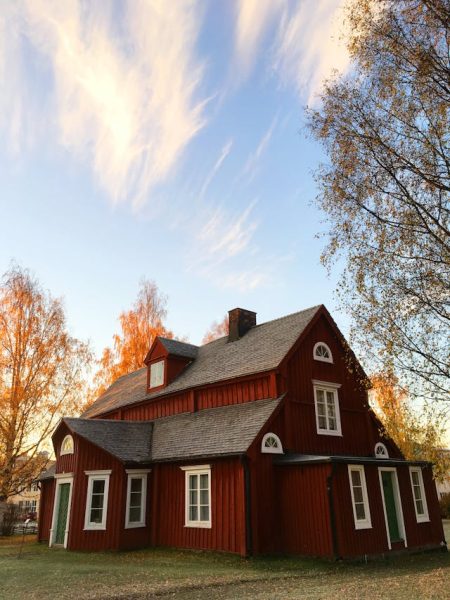
Roofs are essential to the integrity and safety of any building. They protect against the elements, maintain energy efficiency, and contribute to the overall aesthetic appeal. However, roofing problems can arise due to a variety of factors, including weather conditions, poor installation, and lack of maintenance. Recognizing common issues and taking proactive measures can significantly extend the lifespan of your roof. This article outlines the most common roofing problems and offers practical solutions to help you avoid them. Understanding these issues is an important source of knowledge for homeowners and property managers alike.
1. Leaks
Roof leaks are one of the most common issues faced by homeowners. They can occur for various reasons, such as damaged shingles, deteriorating flashing, or clogged gutters. A small leak can quickly escalate into a significant problem, leading to water damage, mold growth, and structural issues and contacting a roofing contractor near Bradenton, FL is a great way to stop the leak.
Prevention Tips:
- Regular Inspections: Inspect your roof at least twice a year, especially after severe weather. Look for missing shingles, rusted flashing, or any signs of wear and tear.
- Gutter Maintenance: Keep gutters and downspouts clear of debris to allow proper drainage. Clogged gutters can cause water to back up and leak into the roof structure.
- Professional Inspections: Hire a roofing professional for a thorough inspection every few years. They can identify issues that may not be visible to the untrained eye.
2. Poor Installation
Improper installation can lead to numerous roofing issues. If a roof is not installed correctly, it may not withstand weather conditions or may develop leaks over time. This often occurs when homeowners attempt DIY roofing projects or hire inexperienced contractors.
Prevention Tips:
- Choose Qualified Contractors: Always hire licensed and experienced roofing contractors. Check their references and read reviews to ensure their reliability.
- Research Roofing Materials: Understand the materials being used and their installation requirements. Different materials have varying lifespans and installation methods.
3. Algae and Moss Growth
In humid climates, algae and moss can thrive on roofs, particularly those with shaded areas. This growth can trap moisture, leading to shingle deterioration and potential leaks.
Prevention Tips:
- Install Algae-Resistant Shingles: Some roofing materials are treated to resist algae growth. Consider using these when replacing your roof.
- Regular Cleaning: Periodically clean your roof to remove any algae or moss. Use a soft brush or a power washer on a low setting to avoid damaging the shingles.
4. Punctures and Blisters
Punctures and blisters in roofing materials can occur due to foot traffic, fallen branches, or hail damage. These issues can compromise the roof’s integrity and lead to leaks.
Prevention Tips:
- Limit Foot Traffic: Avoid walking on the roof whenever possible. If access is necessary, use designated walkways to minimize damage.
- Trim Nearby Trees: Regularly trim branches that hang over your roof. This reduces the risk of punctures from falling branches.
5. Flashing Problems
Flashing is the material used to direct water away from critical areas of the roof, such as chimneys and vents. If flashing is improperly installed or damaged, it can lead to significant leaks.
Prevention Tips:
- Inspect Flashing: Regularly check the flashing for any signs of damage or corrosion. Replace or repair damaged flashing immediately to prevent water infiltration.
- Sealant Application: Ensure that sealant around the flashing is intact. Reseal areas as needed to maintain a watertight seal.
6. Aging and Deterioration
All roofing materials have a lifespan. As roofs age, they become more susceptible to damage from weather, UV rays, and general wear and tear. Aging roofs can exhibit signs such as curling shingles, granule loss, and fading.
Prevention Tips:
- Schedule Replacement: Keep track of your roof’s age and plan for replacement before significant issues arise. Most asphalt roofs last around 20 to 25 years.
- Regular Maintenance: Invest in regular maintenance to extend the life of your roof. This includes cleaning, inspections, and necessary repairs.
7. Ventilation Issues
Proper ventilation is crucial for maintaining a healthy roof and preventing heat buildup in the attic. Inadequate ventilation can lead to increased energy costs, moisture buildup, and roof damage.
Prevention Tips:
- Install Ventilation Systems: Ensure your roof has adequate ventilation, including ridge vents and soffit vents. This helps regulate temperature and humidity levels.
- Monitor Attic Conditions: Regularly check the attic for signs of moisture, such as mold or condensation. Address any ventilation issues promptly.
8. Ice Dams
In colder climates, ice dams can form at the edge of roofs, preventing melting snow from draining properly. This can lead to leaks and structural damage as water backs up under shingles.
Prevention Tips:
- Insulate Attics: Properly insulate your attic to prevent heat loss, which can contribute to ice dam formation. Make sure that the insulation is not obstructing ventilation.
- Heat Cables: Consider installing heat cables along the roof’s edge to melt snow and ice, allowing for proper drainage.
9. Storm Damage
Severe weather events, such as hailstorms, high winds, and heavy rain, can cause significant damage to roofs. Even minor storms can lead to issues like missing shingles or damaged flashing.
Prevention Tips:
- Emergency Preparedness: Have a plan in place for storm preparedness, including securing outdoor items and having a roofing contractor on call for emergency repairs.
- Post-Storm Inspections: After a storm, inspect your roof for any visible damage. Address issues quickly to prevent further problems.
10. Roof Sagging
A sagging roof can be a sign of structural issues or excessive weight from snow or debris. This not only affects the roof’s appearance but can also compromise its integrity.
Prevention Tips:
- Clear Debris: Regularly remove leaves, branches, and other debris from your roof. This prevents excessive weight and reduces the risk of sagging.
- Check for Structural Issues: Consult with a professional if you notice sagging or other structural concerns. Early intervention can prevent costly repairs down the line.
Conclusion
Understanding and addressing common roofing problems is vital for maintaining the integrity and longevity of your roof. Regular inspections, proper maintenance, and timely repairs can save you from costly issues in the future. By taking proactive measures, you can protect your investment and ensure that your roof continues to serve its important function for years to come. If you are unsure about the condition of your roof, consult with a professional to assess any potential problems.

